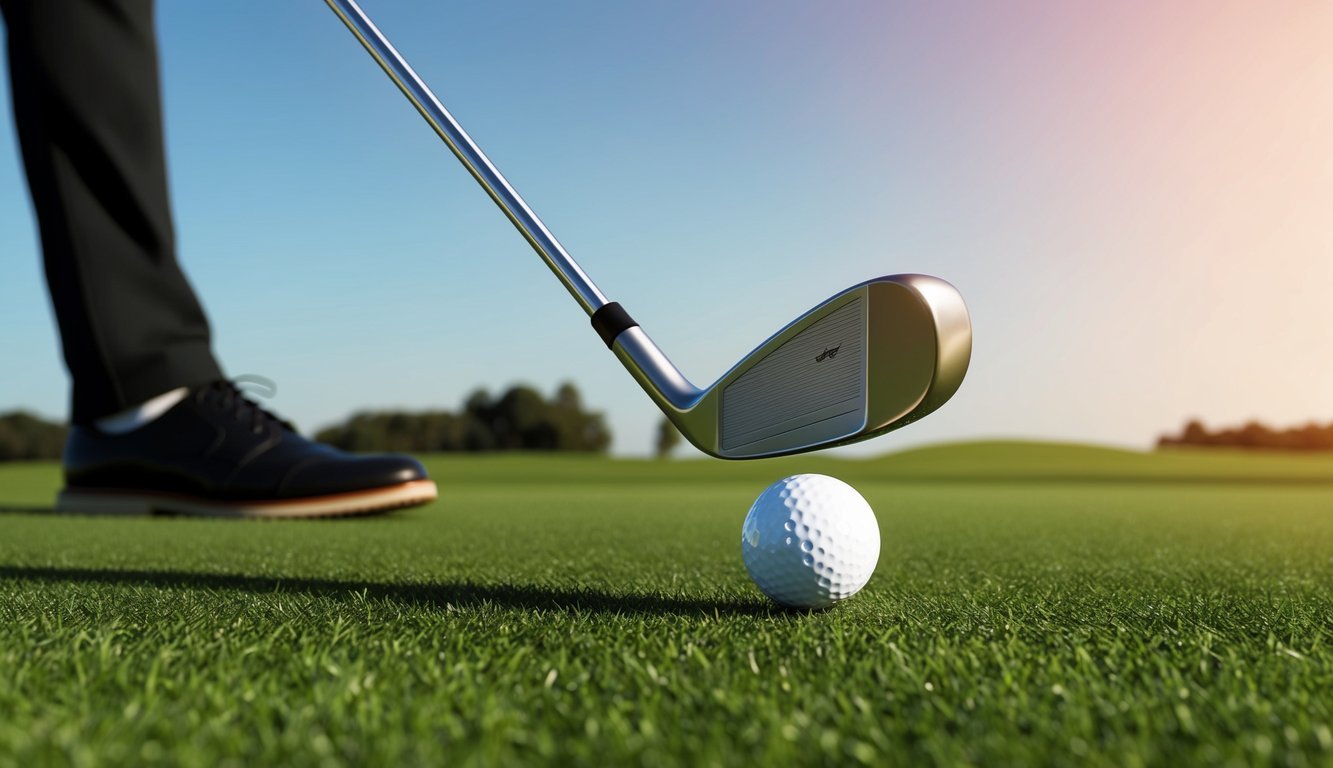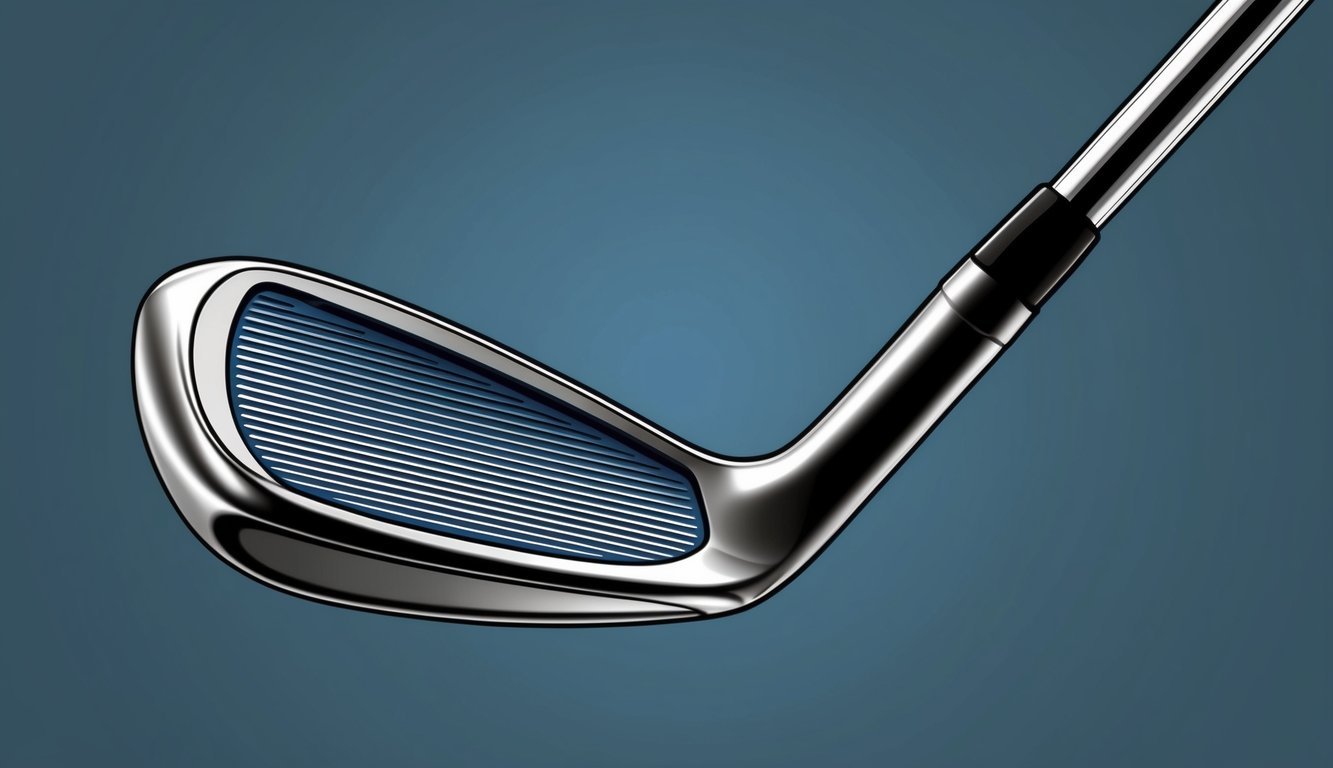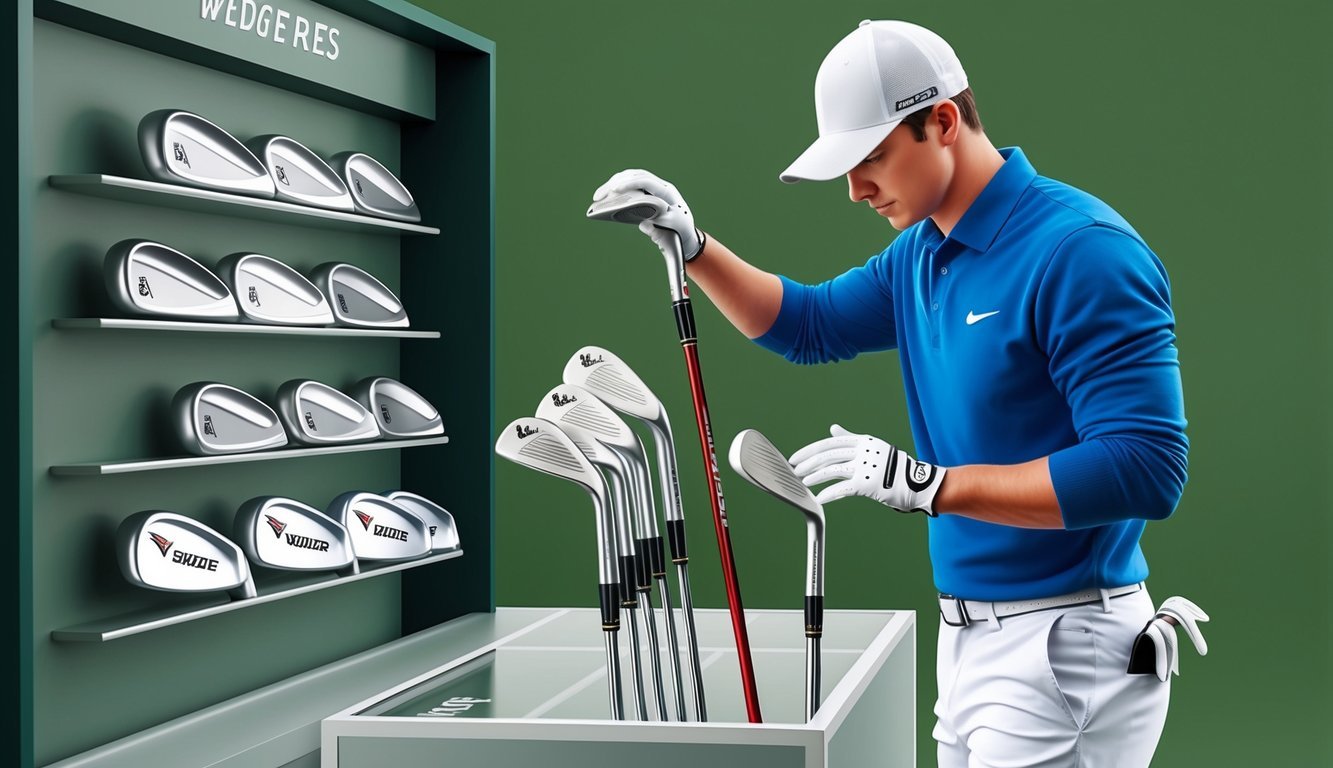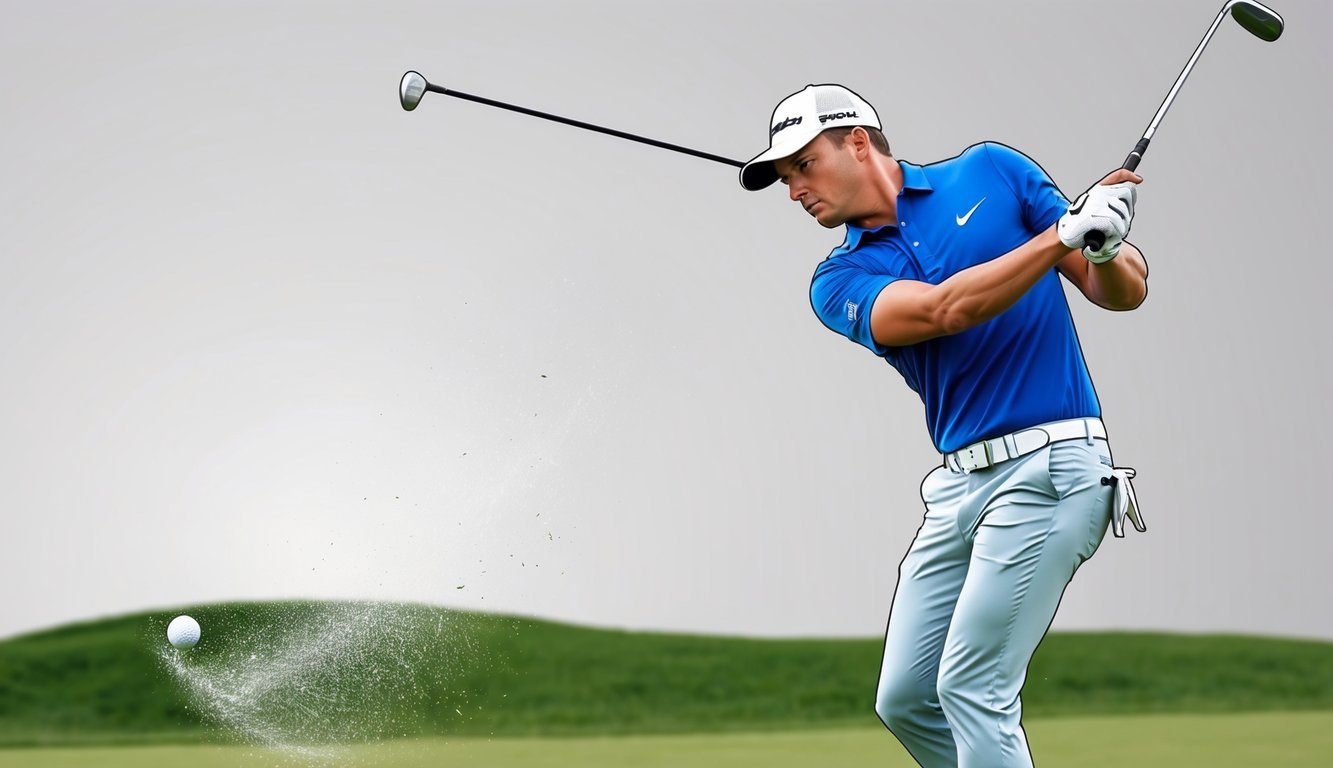Golf enthusiasts always seek an edge to improve their game, and understanding club selection is essential to mastering this sport.
One key element is the attack wedge, a crucial club that can enhance your approach shots. An attack wedge typically features a loft angle between 48 and 52 degrees, offering the perfect balance between a pitching wedge and a sand wedge.
This specific loft allows for precise, high-spinning shots that stop quickly on the green, making it indispensable for accurate approaches.

Choosing the right wedge is crucial for optimal performance on the course.
With its unique blend of height and control, the attack wedge is often the club of choice when you need just the right distance and accuracy.
Understanding how the loft affects your shots can help you make strategic decisions and potentially lower your scores.
Recognizing the role of wedges in developing excellent golf skills will improve your game significantly.
By mastering the attack wedge and integrating it effectively into your set, you equip yourself with the tools to face various challenges on the course.
Key Takeaways
- The attack wedge has a loft between a pitching and sand wedge.
- Choosing the right loft is essential for improving shot control.
- Mastering wedge use can significantly enhance your golf game.
Understanding Golf Wedges and Their Purposes
Golf wedges are indispensable tools in your golf bag, each designed with specific characteristics to finesse your short game.
You’ll find variations in lofts, bounces, and uses among different wedge types, which are key to selecting the right wedge for any shot situation.
Types of Wedges and Their Distinct Features
Pitching Wedge: Typically has a loft between 44-48 degrees.
It’s ideal for full swings or longer approach shots where a higher ball flight is needed.
Gap Wedge (or Approach Wedge): With a loft around 50-54 degrees, this wedge bridges the distance gap between a pitching wedge and a sand wedge.
Sand Wedge: Usually features a loft of 54-58 degrees and a wider sole to navigate out of bunkers effectively.
The added bounce helps when hitting from sand or softer turf.
Lob Wedge: Offers a high loft (typically 58-64 degrees), making it perfect for short, high trajectory shots over obstacles.
This wedge is great when you need the ball to land softly and quickly stop on the green.
Role of Loft in Wedge Performance
Loft angle significantly affects the trajectory and distance of your shots.
Lower lofted wedges like the pitching wedge are perfect for longer shots with lower flight paths.
A higher loft, such as that on a lob wedge, is suitable for shorter, precision shots with steep ascent and descent profiles.
Adjusting the loft angle can fine-tune performance.
For example, altering a 50-degree wedge to 49 or 51 degrees influences shot height and spin.
Properly understanding and utilizing these loft variations ensures you have a wedge suitable for every circumstance on the course.
The Importance of Wedge Loft in Your Game
Wedge loft plays a crucial role in your golf game, impacting shot trajectory, distance, and control.
Understanding how to select the right loft can enhance your short game significantly by managing yardage gaps and tailoring your shots to specific situations.
Identifying the Right Loft for Different Shots
Choosing the appropriate wedge loft depends on the shot type and the distance you need to cover.
For shorter shots around the green, a higher loft provides a softer landing, making it easier to stop the ball quickly.
This is especially useful when you want to carry bunkers or hazards.
For a full swing shot, consider loft angles between 50 and 54 degrees, typically found in attack wedges or gap wedges.
These provide enough loft to get the ball airborne and achieve a consistent distance without sacrificing control.
Balancing loft and swing speed helps make your shot more predictable, enhancing your accuracy and confidence on the course.
Managing Distance Gaps Between Wedges
Managing distance gaps between your wedges is essential to fine-tuning your approach shots.
A typical set might include a pitching wedge, attack wedge, and sand wedge, each with varying lofts to cover different yardages.
Maintaining even loft increments—generally between 4-6 degrees—ensures smooth transitions between each club.
This helps eliminate overlapping distances or large, unplayable gaps in your set.
For example, when manufacturers design pitching wedges with lower lofts, they create yardage gaps that can be addressed by a carefully selected attack wedge.
Analyzing the Attack Wedge

The attack wedge, often referred to as an “A-wedge” or “UW,” bridges the gap between pitching and sand wedges.
Featuring a loft typically between 48-52 degrees, it is ideal for precise shots around the green.
When and How to Use the Attack Wedge
Use the attack wedge for shots within 100 yards, where control and spin are crucial.
This club is perfect for full swings on shorter approaches or when you need to land the ball softly.
Its loft—often between 48 and 52 degrees—allows the ball to rise high and land gently.
When pitching or chipping, the A-wedge can help you master tricky lies on the fairway or near the rough.
Familiarize yourself with its loft and practice different swing techniques to maximize its effectiveness on the course.
Choosing the Right Wedges for Your Bag

When selecting the right wedges, it’s essential to consider various aspects such as loft angles and bounce.
A custom fitting can further refine your choice based on your play style and needs.
Factors to Consider for Wedge Selection
Selecting wedges involves evaluating loft angles, bounce, and grind.
Generally, four wedges can optimize your short game: pitching, gap, sand, and lob wedges.
The gap between lofts, typically around 4-6 degrees, ensures consistent performance across different yardages.
Bounce impacts how the club interacts with turf and sand.
A higher bounce is ideal for softer conditions, while lower bounce works well in firm environments.
Grind affects shot versatility, and choosing the right one depends on your swing style.
Many manufacturers offer wedges with various grind options, allowing for a tailored experience.
Customization and Wedge Fitting
Customization plays a key role in wedge selection.
A wedge fitting with a professional fitter helps you analyze the specifics of your swing to recommend suitable club features.
This can include altering the lie angle to ensure the sole of the club flushes with the ground during your swing.
Different manufacturers provide customization options, making it possible to choose materials, grips, and finishes.
Your golf bag should ultimately reflect your unique playstyle.
By integrating these personalized features, you achieve greater consistency and confidence in your short game, ultimately leading to better performance on the field.
Techniques and Tips for Mastery

Mastering the attack wedge in golf can dramatically improve your short game.
Focusing on precision, spin, and control allows you to handle various shots, whether you’re chipping from the fringe or escaping a bunker.
Improving Your Short Game
Your short game hinges on precision and control.
With an attack wedge, emphasis on controlling spin is essential.
For instance, using a mild swing can help maintain precision and allow your shot to stop quickly upon contact with the green.
It’s vital to practice the wedge for different distances to maintain versatility.
Adjusting your grip and stance can also refine accuracy.
The way you handle short irons, especially the attack wedge, can impact your overall performance on the course by improving your ability to navigate the green.
Wedge Shots: From Bump and Run to Flop Shots
Understanding various shots is crucial for optimizing your attack wedge.
A bump and run relies on running the ball along the ground.
It is perfect for situations where you have plenty of green to work with.
It requires less loft, as the ball should travel low with controlled speed.
On the other hand, flop shots utilize higher loft and an open clubface.
They are designed for getting the ball up quickly to clear obstacles like bunkers.
Mastery of flop shots takes practice with attention to the ball’s position and swing speed.
Balancing these techniques empowers you to tackle varied scenarios effectively.

